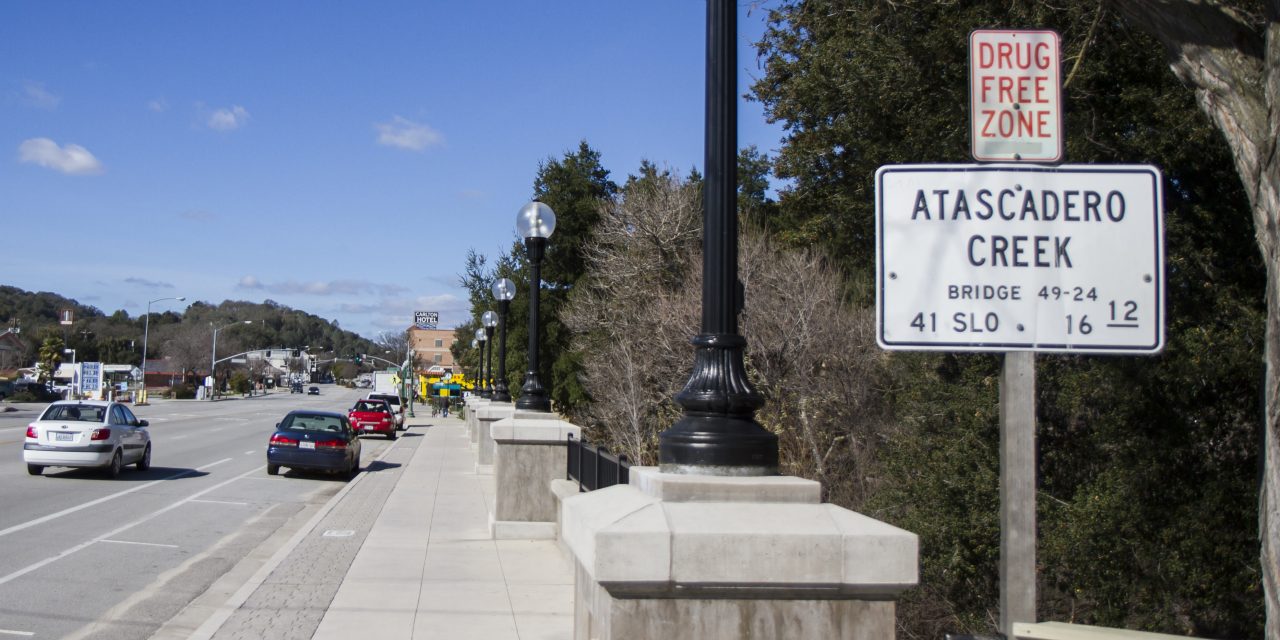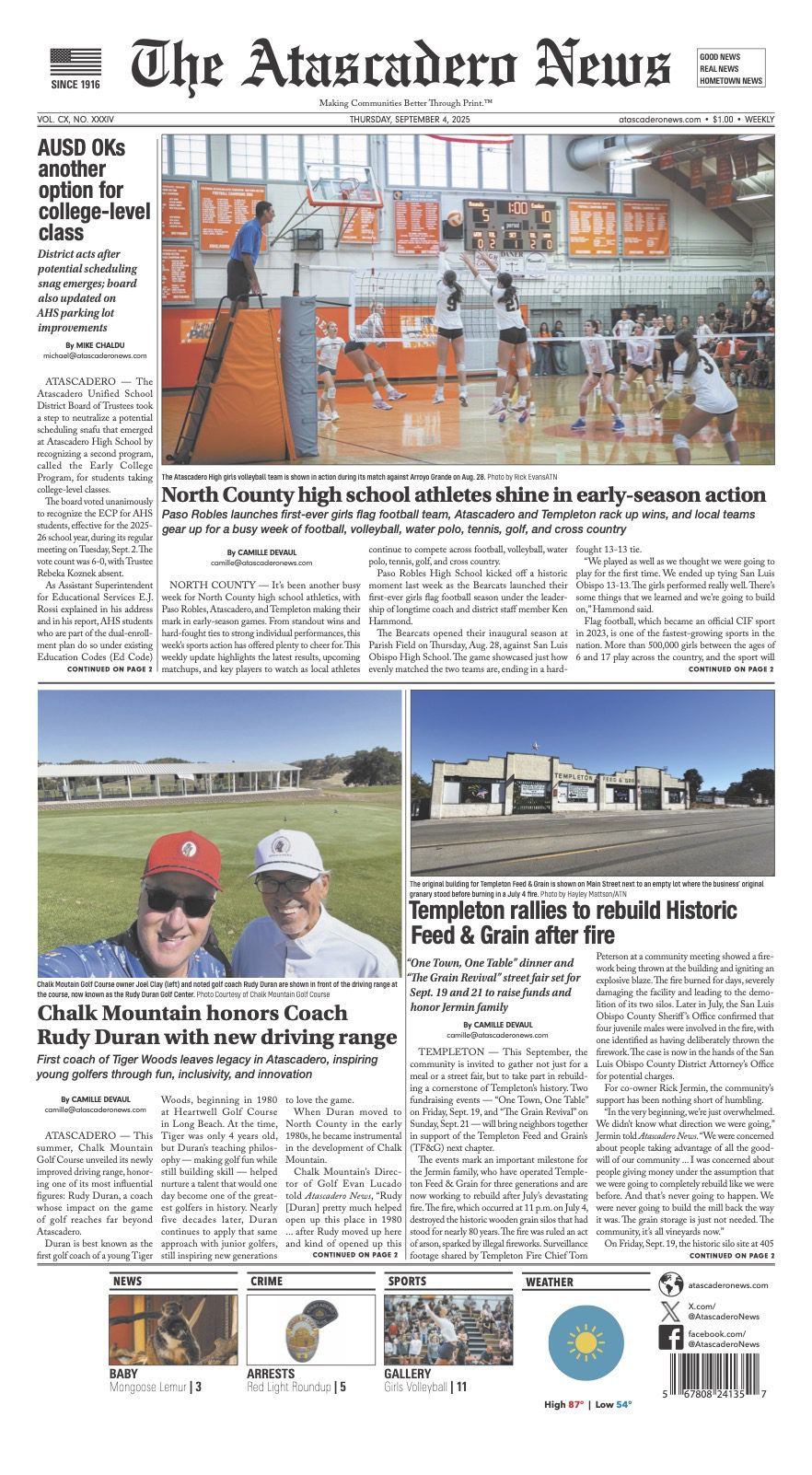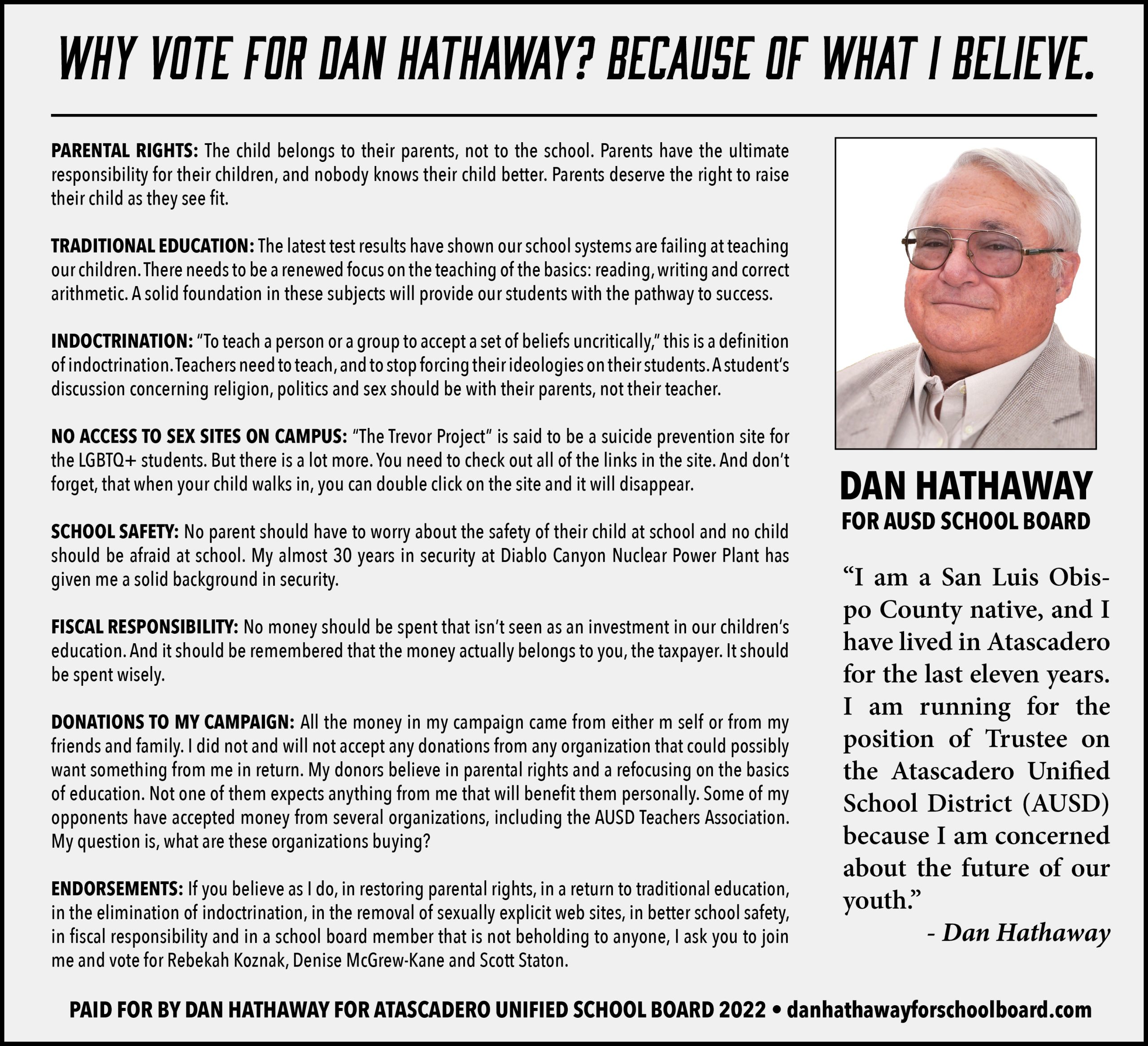Business owners warn parents, report spike in petty crimes
ATASCADERO — The City of Atascadero’s downtown area is experiencing vandalism, drug abuse, and vagrancy, and there is no consensus on how to solve the problem. Recently, a nonprofit closed its doors for fear of the safety of its docents, prolific drug use has been found on private property and a local business owner posted a warning on social media telling parents to keep their children away from an area the City spent millions of dollars to encourage economic growth and quality of life.
The Atascadero Historical Society temporarily closed its Museum located at 6600 Lewis Ave in late October. President Jim Wilkins said that after several incidents the organization suspended museum operations until security measures can be put in place. Walking the property, Wilkins pointed out graffiti, trampled landscape and a destroyed fountain once owned by City founder E.G. Lewis. The building’s back deck still had bedding someone left from the previous night.
Alex Zanini of the Senior Citizens United, Inc. told The Atascadero News that termite inspectors found needles and debris beneath the building. The nonprofit determined that a group of drug users gained access underneath the senior center through a crawl space. Rogers confirmed Zanini’s story saying, “They were sleeping there every night.”
The organization estimated that up to 10 people may have been living beneath the building. The waste and drug paraphernalia was so extreme that a hazmat team passed on the $3,000 contract to clean up the mess. With the access now sealed, Rogers said that people still sleep, stash their belongings and defecate on other parts of the Senior Citizen Center’s property.
“So the biggest problem we have now,” said Rogers indicating a narrow alleyway, “is that they come through here and use that area as a toilet.”
On the other side of the building, Rogers said people sleep inside the fenced area. She indicated litter strewn about the area that included a half-empty 40-ounce bottle of beer. Rogers also stated that in the past City officials have told her that constructing a public bathroom could cost a million dollars.
Dr. Jason Pambrun, DDS who has owned his downtown business since 2007 said that the problem is getting worse. Situated next door to the SCU, his 180-degree view of the creek that includes Centennial Bridge is obstructed by a group of apparently homeless people gathered before 9 a.m.
“I would say in the last 10 months it’s really gone up, I mean a notable increase in the people in the backyard here,” Pambrun said. “We’ve noticed a lot of new faces here recently.”
Pambrun posted on Facebook to alert parents of the increasing number of kids hanging out behind the building by the creek.
“I wanted to put a warning out to the parents, we’ve noticed a recent uptick in kids after school mixing back here,” he said.
Pambrun detailed kids drinking and fighting behind his business and the historical society museum. Although he sees a strong police presence it does not seem to deter kids from gathering and mingling with the homeless.
“The police are down here all the time,” Pambrun said. “My understanding is that there is not a lot they can do from a law enforcement perspective, but they do come down here.”
Atascadero Police Department Lt. Jason Carr and Lt. Robert Molle said that law enforcement’s hands are tied when dealing with nonviolent crimes.
California Prop. 47 recategorized nonviolent offenses such as drug possession or shoplifting from felonies to misdemeanors, essentially changing a list of jailable actions to ticketable infractions.
Also exacerbating the situation, a 2018 landmark ruling by the 9th U.S. Circuit Court of Appeals deemed that Boise, Idaho’s anti-camping laws were unconstitutional. The court ruled that a camping ban on public land is considered cruel and unusual punishment if a city does not have enough shelter beds available. Cities afraid of being sued have backed off from enforcing bans on camping.
“That’s what all these props were doing, they’re finding that the enforcement isn’t necessarily the answer, unfortunately — they haven’t found the true answer and so now we don’t even have enforcement,” said Molle.
APD is working with the City to produce ordinances to help deal with the downtown problem. Early this fall, the City repealed and replaced a non-smoking ordinance that expanded the territory it covers as well as included a vaping ban. The City public works department recently cleared a portion of the invasive plant overgrowth between El Camino and Lewis Avenue in the Atascadero Creek where Pambrun said people were stashing their belongings. Carr said that the issue is not merely a local problem but a national one.
“We’re not going to be able to write a citation and write tickets out of this problem,” Carr said. “We have got to come up with some out-of-the-box ideas to try and address the issues because it’s systemic now.”
Molle said that in the past APD experienced success with a community outreach program. An enforcement detective teamed with a behavioral health psychiatric technician to interact with people on the street with drug and alcohol problems and mental health issues to try to guide them to the help they need. Called CAT (Community Action Teams) programs, these outreaches attempt to balance law enforcement with public health services. Unfortunately, the program stalled when the technician found other employment.
Carr and Molle agree that the multiple issues facing the downtown area need not all come from law enforcement and it will take a joint effort from concerned parties to find a sustainable resolution.
“If everyone who has a dog in the fight can put their heads together and come up with a viable solution, we’re all for it,” Carr said. “It doesn’t have to come from an enforcement standpoint.”
















